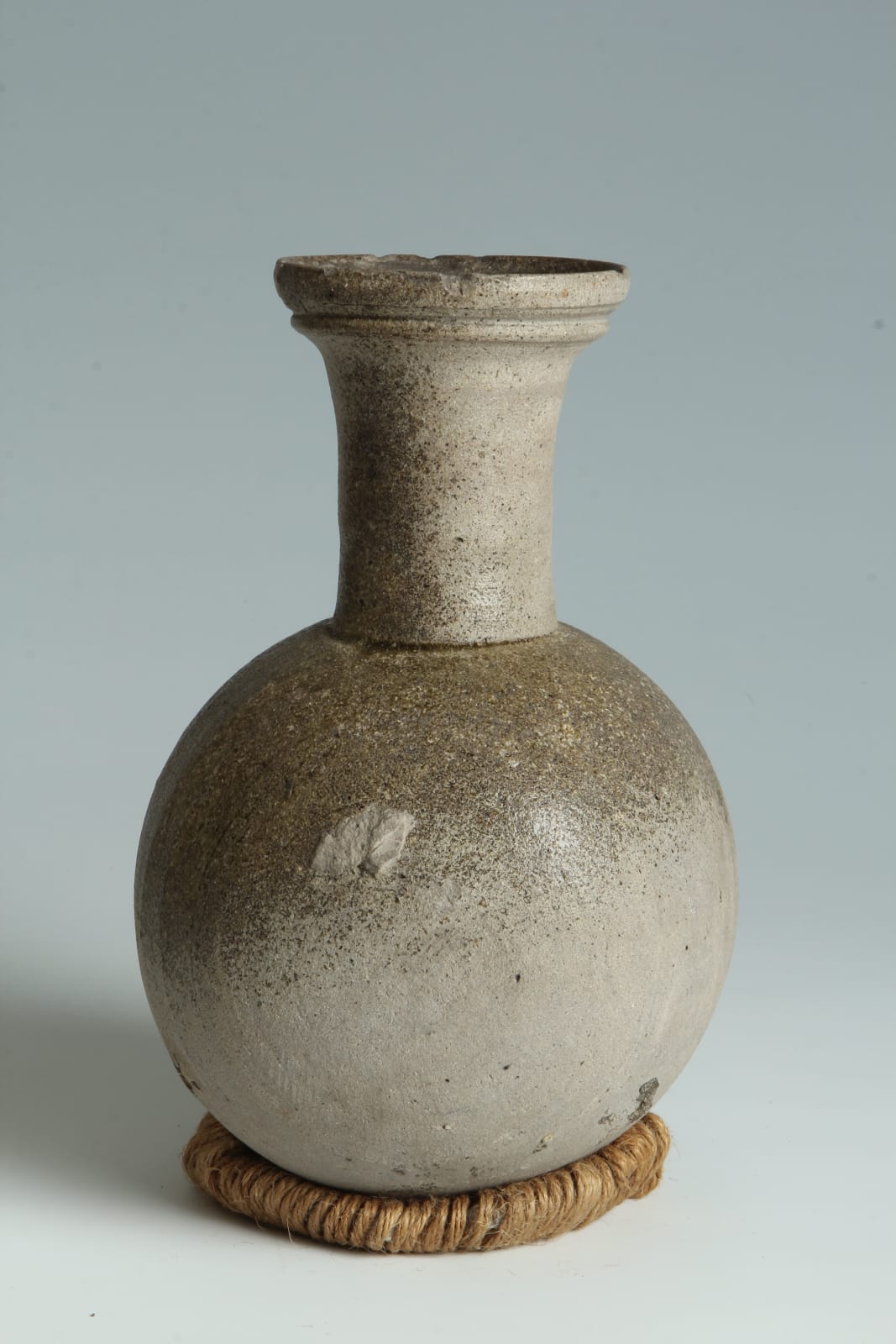Sue-Ware Flask, 6th century
Stoneware with natural ash glaze
Size 9¼ x 6¼ x 6 in. (23.8 x 15.6 x 15 cm)
T-3928
Further images
Sue-ware is the earliest high-fired ceramic ware made in Japan. The technique for Sue-ware originated in the Korean peninsula and was introduced to Japan from there in the 5th and...
Sue-ware is the earliest high-fired ceramic ware made in Japan. The technique for Sue-ware originated in the Korean peninsula and was introduced to Japan from there in the 5th and 6th centuries. The surface has a natural ash glaze, caused by flying pinewood ash settling on the ceramic and melting during the long firing. Comes with a fitted wooden storage box.
The vessel was made in three parts: two half-spheres forming the body and a flared neck. Rather than having a flat bottom or a foot, the flask has a rounded bottom. During the Kofun period (250-538) the Japanese mostly lived in simple huts, and vessels such as this one kept balance by being pressed into the soft sand and ash by the fireplace. When during the Nara period (710-794) living conditions changed to structures with wooden floors with wooden tables, rims started to be added to the round bottom so a flask could stand on its own.
The vessel was made in three parts: two half-spheres forming the body and a flared neck. Rather than having a flat bottom or a foot, the flask has a rounded bottom. During the Kofun period (250-538) the Japanese mostly lived in simple huts, and vessels such as this one kept balance by being pressed into the soft sand and ash by the fireplace. When during the Nara period (710-794) living conditions changed to structures with wooden floors with wooden tables, rims started to be added to the round bottom so a flask could stand on its own.
Exhibitions
TEFAF 2018









